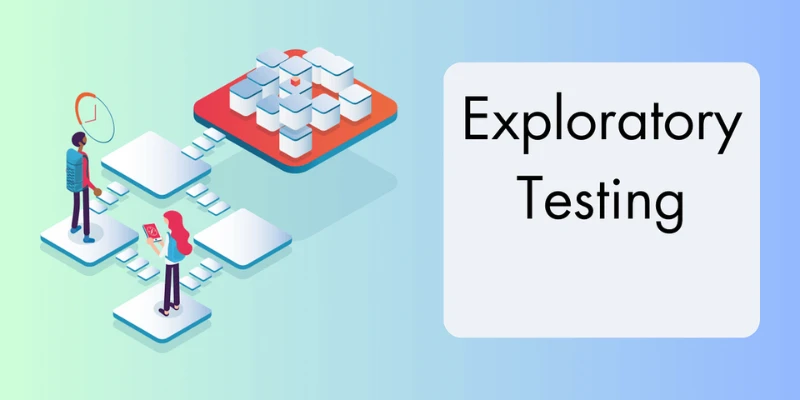
In the fast-paced world of software development, ensuring that applications function smoothly and meet user expectations is crucial. Among the various testing approaches, exploratory testing stands out as an effective method to uncover hidden defects, unexpected behaviors, and usability issues. Unlike scripted testing, it emphasizes creativity, intuition, and experience, allowing testers to navigate the application freely and identify potential problems that predefined test cases might miss.
In agile organizations, where applications change often and comprehensive scripted testing is frequently unfeasible, this method is very helpful. By learning structured exploratory testing strategies, testers can enhance software quality while optimizing time and effort. Joining a Best Software Training Institute in Chennai provides professionals with practical exposure to these methods, helping them apply real-world techniques effectively and improve their testing expertise.
Understanding Exploratory Testing
Exploratory testing is an unscripted, experience-driven method where testers actively examine the software to identify defects, usability concerns, and edge cases. Testers use their knowledge of the application, domain, and end-user behavior to guide their testing rather than following predetermined scripts.
This methodology relies heavily on observation, intuition, and critical thinking. Testers simultaneously learn, design, and execute tests, making exploratory testing highly adaptable to complex or rapidly changing applications.
Some key aspects include:
- Simultaneous Learning and Testing: Testers discover new functionality while validating existing features.
- Creative Problem-Solving: Testers apply innovative approaches to find bugs that may not be evident through standard testing.
- Focus on Risk Areas: The components of the program that are most likely to malfunction or affect users are given priority.
Importance of Exploratory Testing
In dynamic development contexts, exploratory testing is extremely important for guaranteeing software quality. Its importance lies in several areas:
- Finding Hidden Defects: It uncovers issues that scripted testing may overlook, including subtle UI glitches and performance bottlenecks.
- Usability Evaluation: Testers assess whether the application is intuitive and user-friendly.
- Quick Feedback: It allows testers to provide immediate feedback to developers, accelerating the release cycle.
- Flexibility: The approach adapts well to changing requirements, making it ideal for agile projects.
Using this method, QA teams can complement automated and scripted testing, ensuring a more comprehensive evaluation of software quality. Professionals pursuing ISTQB Certification can leverage exploratory testing techniques to enhance their skill set, demonstrating advanced knowledge in software testing practices and improving their career prospects in quality assurance.
Preparing for Exploratory Testing
Even though exploratory testing is unscripted, proper preparation is essential for effectiveness. Key steps include:
- Define Objectives: Clearly state the goal of the testing session, such as evaluating bug fixes or validating a new feature.
- Gather Information: Understand the application’s functionality, architecture, and user expectations.
- Identify Risk Areas: Focus on high-impact functionalities or recently modified features.
- Set Time Limits: Allocate a fixed duration for each testing session to maintain efficiency and prevent spending excessive time on minor features.
Preparation ensures the testing process remains structured, focused, and productive.
Effective Exploratory Testing Techniques
Several techniques can enhance the efficiency and effectiveness of exploratory testing:
- Session-Based Testing: Divide testing into focused sessions with clear goals. Document actions, observations, and defects after each session.
- Mind Maps: Visual representations of features and workflows help testers plan their exploration and ensure critical areas are covered.
- Heuristic Approaches: Use strategies like boundary testing, error guessing, or CRUD (Create, Read, Update, Delete) to guide exploration.
- Pair Testing: Two testers collaborate to identify defects more effectively by combining perspectives.
- Bug Categorization: Prioritize defects based on severity, impact, and frequency for better reporting.
Applying these techniques creates a balanced and adaptable testing process, enhancing both defect detection and coverage. A Software Testing Course in Chennai provides learners with practical training on these methods, helping them confidently execute real-world testing tasks and strengthen their quality assurance skills.
Documentation During Exploratory Testing
Although exploratory testing is unscripted, documenting findings is crucial for tracking defects, sharing insights, and reporting results.
Important documentation practices include:
- Session Notes: Record actions performed, observed behaviors, and anomalies.
- Screenshots and Logs: Capture evidence of defects or unexpected behavior.
- Test Charters: Define objectives, focus areas, and expected outcomes for each session.
- Defect Reports: Clearly describe severity, reproduction steps, and impact.
Proper documentation ensures the testing process contributes effectively to the overall quality assurance strategy.
Common Challenges and Solutions
Exploratory testing comes with certain challenges that can be addressed with structured approaches:
- Unclear Objectives: Define goals for each session to maintain focus.
- Incomplete Coverage: Use mind maps, checklists, or session notes to ensure important areas are tested.
- Subjectivity: Pair testing and peer reviews reduce bias and improve defect detection.
- Time Constraints: Timebox sessions to balance thoroughness with efficiency.
By managing these challenges, testers can ensure exploratory testing remains reliable and impactful.
Exploratory testing is an essential part of modern software quality assurance, providing flexibility, creativity, and quick insights into application behavior. It complements automated and scripted testing by identifying hidden defects, evaluating usability, and offering actionable feedback.
By mastering techniques like session-based testing, heuristic approaches, and mind mapping, testers can significantly improve software quality while optimizing time and resources. Effective exploratory testing ensures that applications meet user expectations, perform reliably, and provide a seamless experience even in fast-paced development environments.
